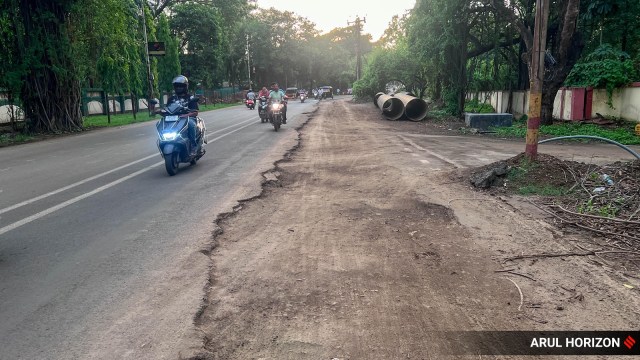
City roads are the largest public spaces across Indian cities. However, they are treacherously unwelcoming to a large majority of our citizens. During the monsoons, they show our collective incompetence and apathy in tending to our cities and their roads. Even on non-rainy days, between broken footpaths, lack of safe pedestrian crossings, open drains, live electric wires, dark alleys, and potholes, our city roads inhibit our freedom as citizens to joyfully walk or cycle or drive. The absence of mandatory design, execution, and maintenance standards for city roads, including underground utilities, poor capacities of engineers and contractors, and frequent road-cutting due to lack of a “One Road, One Tender” approach across civic agencies, are the root causes for most of these challenges.
City roads are not just a movement corridor, they also carry eight critical pieces of networked infrastructure — drainage, water, power, sewer, street lighting, optical fibre, piped gas, and traffic surveillance. How infrastructure networks are organised under or above city roads is a function of road design and impacts the quality of both.
India has transformed its highways over the past two decades. Political leadership at the highest levels, large capital outlays, and a specialist institution have contributed to a spectacular turnaround. We need a similar effort to transform city roads. As a country, we need to learn how to design, build, and maintain these roads such that all citizens, whether on foot, bicycle or a motor vehicle, are able to freely use them. The benefits of well-designed and safe roads range from better public-health outcomes to higher economic productivity, better public transport connectivity and increased participation of women in the workforce to lower road fatalities, besides significant savings in lifecycle costs.
The Tender S.U.R.E. (Specifications for Urban Roads Execution) example is instructive. The Government of Karnataka has funded over 100 km of roads in Bengaluru and Hubballi-Dharwad based on Tender S.U.R.E. guidelines. An initiative of JanaUSP, it focuses on providing safe movement corridors for all citizens across different modes of transport, with an emphasis on walkability and safety, providing for organised underground utilities, and durability of the roads. Therefore, it delivers continuous, even footpaths, safe pedestrian crossings, uniform lane widths, utility corridors under footpaths with inspection chambers at regular intervals, one tender for one road across all civic agencies (the last two to avoid frequent road-cutting), and a model tender with a mandatory maintenance period.
We now need a countrywide, coordinated approach between the Union, state, and local governments to transform city roads on mission mode. At the Union level, we need comprehensive design, execution, and maintenance standards, and model tenders for different typologies of roads in different categories of cities, which states can use as models. We also need the Union government to fund a national mission on city roads based on such design standards and model tenders.
We need state governments to mandate design, execution, and maintenance standards for all city roads, including model tenders. It is appalling that 21st century India does not have mandatory design, execution, and maintenance standards for city roads. Building city roads is not an exercise in civil engineering. City roads need to be citizen-centric. Urban design lends citizen-centricity and a much needed humane touch to road building in cities. Besides budgets for city roads, state governments need to fund systematic leadership development programmes for engineers and contractors, and fund positions for urban designers in million-plus cities. A state-level agency like the Urban Roads Infrastructure Development Agency in Uttar Pradesh is needed to provide state-wide urban design expertise and leadership development to smaller cities. Engineers need to ensure adherence to the standards mandated by the state, turn their focus away from vehicle-only flyovers towards citizen-centric roads, and away from piecemeal execution to designing literally every inch of the road, and building it right the first time.
We would do well to get started with a national mission on city roads which funds a shelf of projects across cities that demonstrates how well-designed, well-built, and well-maintained city roads are possible in India. We need every road in every neighbourhood in every city in India to be a “Janpath”, where women, children, the elderly, and the differently-abled can walk safely, access work and recreation, and exercise their full freedom of movement and life.
Viswanathan is CEO, Janaagraha and executive director, Jana Urban Space Foundation, and Ramesh is director, Urban Design, Jana Urban Space Foundation
© The Indian Express Pvt Ltd
First uploaded on: 02-07-2024 at 12:17 IST



